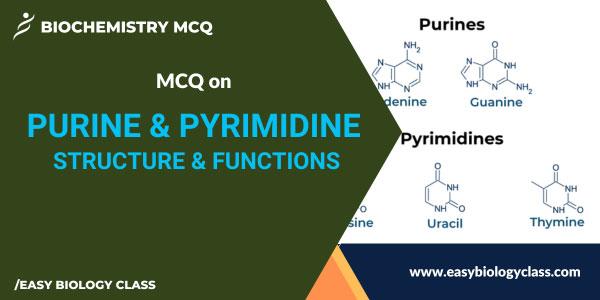
MCQ on HIV AIDS Virus
HIV (Human Immunodeficiency Virus) is a retrovirus that attacks the immune system, specifically CD4 cells (T cells), weakening the body’s ability to fight infections and […]

HIV (Human Immunodeficiency Virus) is a retrovirus that attacks the immune system, specifically CD4 cells (T cells), weakening the body’s ability to fight infections and […]

COVID-19 is an infectious disease caused by the novel coronavirus SARS-CoV-2. It primarily spreads through respiratory droplets, leading to symptoms ranging from mild respiratory issues […]

Pyrimidines are nitrogenous organic compounds with a single-ring structure. They are fundamental building blocks in DNA and RNA, with cytosine, thymine (found in DNA), and […]

Purines are nitrogenous organic compounds that consist of a double-ring structure. They are essential components of DNA and RNA and play crucial roles in cellular […]

Purine and pyrimidine are two types of nitrogenous organic compounds. Purines, like adenine and guanine, have a double-ring structure and are found in DNA, RNA, […]

Purine and Pyrimidine metabolism are essential biochemical pathways responsible for the synthesis and degradation of purine and pyrimidine nucleotides. Purines (like adenine and guanine) and […]

Taq DNA polymerase is a heat-resistant enzyme derived from the bacterium Thermus aquaticus. It is widely used in the polymerase chain reaction (PCR) due to […]

Southern blotting is a molecular biology technique used to detect specific DNA sequences in a sample. It involves digesting DNA, electrophoresis, transferring the DNA to […]

pBR322 is a well-known plasmid DNA used in molecular biology and biotechnology. It was one of the first plasmids developed for cloning and genetic engineering. […]